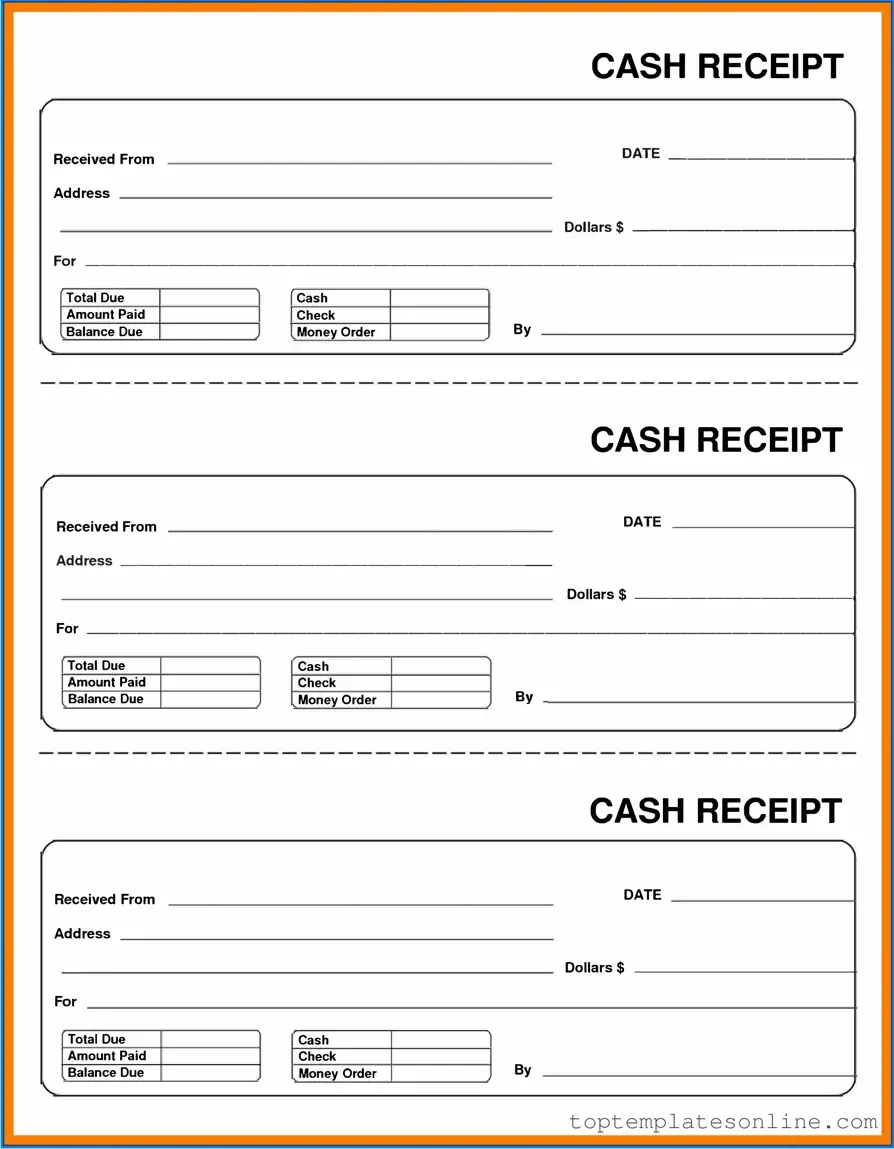The Cash Receipt form is an essential document used in various financial transactions, ensuring that both parties involved have a clear record of cash exchanges. This form typically includes key details such as the date of the transaction, the amount received, and the payer's information. It may also feature a description of the goods or services provided, as well as the signature of the person receiving the cash. By documenting these elements, the Cash Receipt form serves to protect both the payer and the payee, providing a reliable reference for future inquiries or audits. Additionally, businesses often use this form to maintain accurate accounting records, making it easier to track income and manage finances effectively. Understanding the importance of this form can lead to better financial practices and enhanced transparency in monetary dealings.
